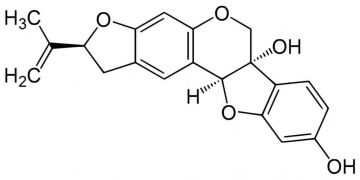For more than five thousand years China has been using soybeans as an additional nitrogen supplement for soil during crop rotation. Found in many East Asian and Hawaiian dishes, green baby soybeans are commonly known as edamame (Japanese for twig bean) or as maodou (Chinese for hairy bean).
Nutrition
Brought to America in the 1930s, soybeans have proved to be useful in a variety of ways. Soy products are derived from soybeans that are labelled as field or vegetable types. Also classified as oil, field types are generally grown to produce soy oil. High in omega fatty acids, soy is also used in feed for livestock and fowl. Vegetable soybeans known as garden types are higher in protein than field types and are used to produce soy milk, tofu, and other soy based food products. It is important to cook the beans before use -they cannot be eaten raw.
Soy is used to make a wide range of vegan and vegetarian products like soy vegetable oil, soy milk, soy lecithin, and tofu. Miso, soy sauce, and tempeh, are some fermented food products made from soy. Textured vegetable protein is made from fat free soy flour that can be used as a meat substitute to make high protein, fat free meals.
Processed soy is used in various dairy free products such as ice cream, cheese, yogurt, milk, cream cheese, and margarine. Although they are high in protein, soy based dairy products do not contain large amounts of calcium. To manufacture products like sprouted soybeans, tofu, soy concentrate, or soy protein isolates, dissoluble soy carbohydrates are broken down as the whey ferments.
For babies who may be allergic to the proteins in pasteurized cow's milk, or for vegetarian and vegan families, soy companies offer soy based infant formulas that the Food and Drug Administration have concluded as safe to use for sole or supplemental nutrition. Soy based infant formulas should not be used if there is an indication of food allergies.
Source of protein
The United States Food and Drug Administration declares that supplemental vitamin products must have a source of full protein. Full, or complete protein contains adequate amounts of essential amino acids that is required by the human body. Soy products offer complete protein for those who would like to replace or reduce their consumption of meat. Animal based food products are high in protein, but are also very high in saturated fat. Soy products offer high protein with no fat.
Since 1990, protein quality has been measured by The Protein Digestibility Corrected Amino Acid Score (PDCAAS). Their primary focus is the evaluation of protein quality according to human amino acid requirements, and how well they can be digested. According to score criteria, soy protein products are nutritionally equivalent to eggs and meat, and includes casein, which promotes health and human growth.
Concentrated soy protein absorbs nearly all of the fiber from the initial soybean. Soy's high protein content makes it an extensively used ingredient for manufactured cereals and baked goods, and for protein powders and beverage drinks.
Not only high in protein, soy based products offer other healthy benefits such as Omega-3 fatty acids that contribute to numerous body actions, and isoflavones that are considered useful in the prevention of prostate, uterine and breast cancer. There is still some medical doubt regarding isoflavones ability to prevent any type of cancer.
Relief in Menopause
Soy is rich in isoflavones, which are the most active phytoestrogens in the human diet. These may help to relieve menopausal symptoms. After the menopause, the level of oestrogen in a woman’s body falls and it is thought that phytoestrogens may provide a substitute for the body’s own oestrogen, relieving symptoms such as hot flushes and dry skin. The interest in phytoestrogens has developed because of the evidence that women in Japan and Asia who consume diets rich in these compounds, do not appear to suffer the same way with hot flushes and sweats as in the western world. In these countries, the diet is rich in soya containing foods, and menopausal symptoms are reported much less. Amongst the main phytoestrogens in the human diet are the isoflavones, which are found primarily in legume type plants such as soya.
Phytoestrogens can be consumed by purely increasing dietary intake, but this involves eating large amounts of legume food plants, such as peas and beans, with variable phytoestrogen content. Supplements of Soya Isoflavones are a convenient alternative.
Reduces Cholesterol
Cholesterol reduction is another healthful advantage that comes with soy protein and soy based foods. Diets high in cholesterol and saturated fats are primary targets for heart disease. Fat free textured vegetable protein and processed soy products contain no added cholesterol or saturated fat.





